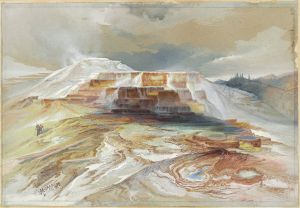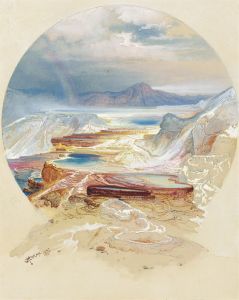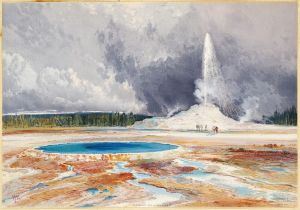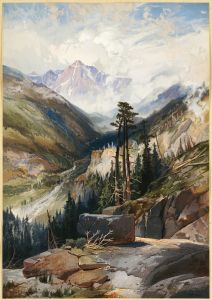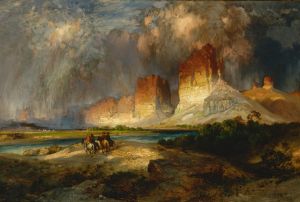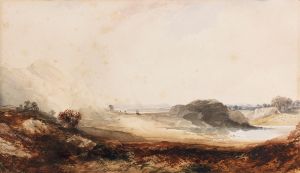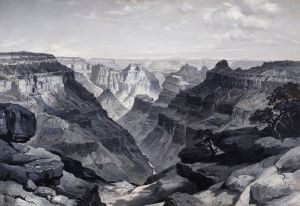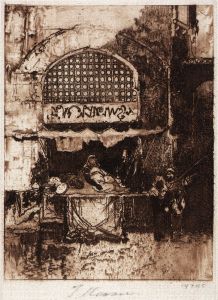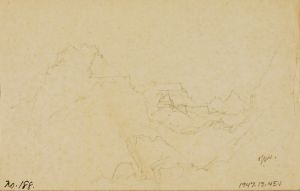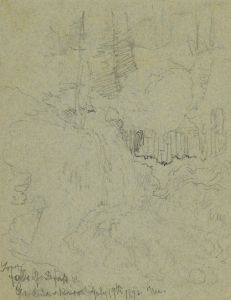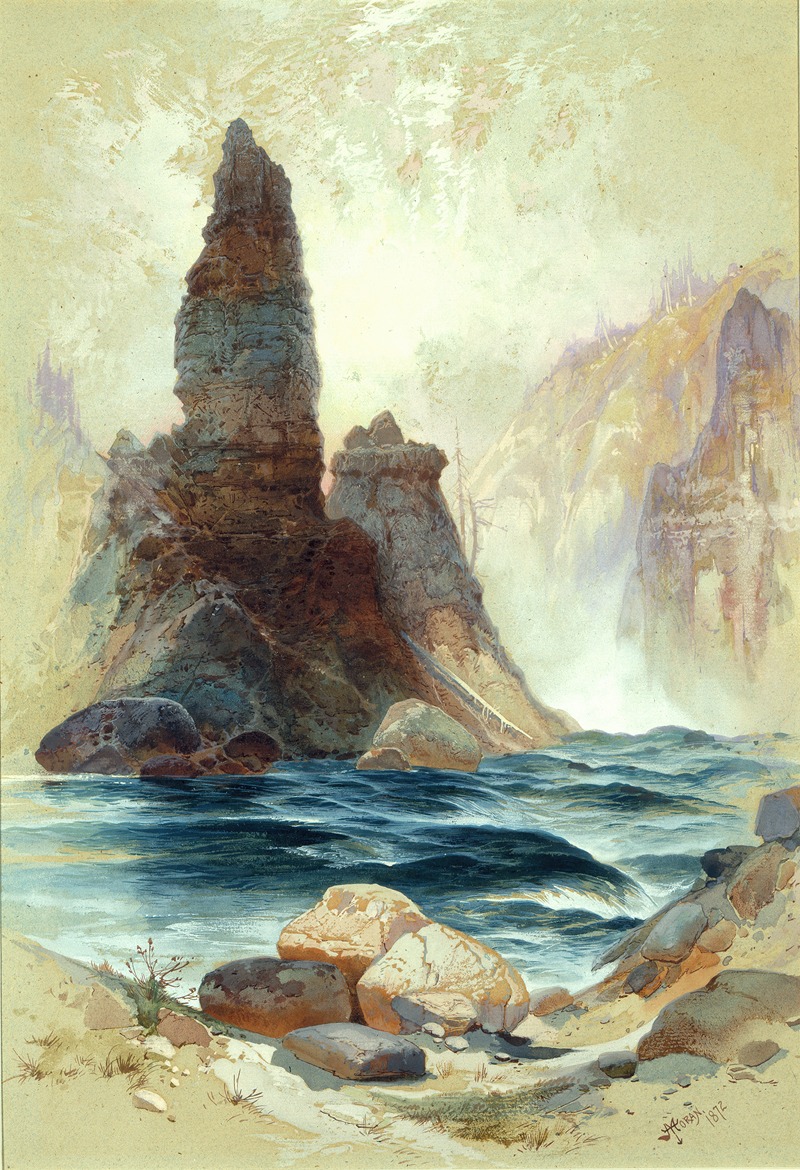
Above Tower Falls, Yellowstone
A hand-painted replica of Thomas Moran’s masterpiece Above Tower Falls, Yellowstone, meticulously crafted by professional artists to capture the true essence of the original. Each piece is created with museum-quality canvas and rare mineral pigments, carefully painted by experienced artists with delicate brushstrokes and rich, layered colors to perfectly recreate the texture of the original artwork. Unlike machine-printed reproductions, this hand-painted version brings the painting to life, infused with the artist’s emotions and skill in every stroke. Whether for personal collection or home decoration, it instantly elevates the artistic atmosphere of any space.
"Above Tower Falls, Yellowstone" is a painting by the renowned American artist Thomas Moran, created in 1871. Moran is celebrated for his dramatic landscapes of the American West, and his work played a significant role in the establishment of the United States National Parks. This particular painting is one of Moran's many depictions of Yellowstone, a region that captivated him with its unique geological features and stunning natural beauty.
Thomas Moran was born in 1837 in Bolton, England, and emigrated with his family to the United States in 1844. He became a prominent figure in the Hudson River School, a mid-19th century American art movement known for its romantic portrayal of the American landscape. Moran's work, however, extended beyond the Hudson River School's traditional boundaries, as he ventured into the American West, capturing its vast and untamed wilderness.
In 1871, Moran joined the Hayden Geological Survey of 1871, led by Ferdinand V. Hayden, which was the first federally funded exploration of the Yellowstone region. Moran was invited to join the expedition as a guest artist, and his participation proved to be pivotal. His sketches and paintings from this journey were instrumental in convincing Congress to establish Yellowstone as the first National Park in 1872.
"Above Tower Falls, Yellowstone" is one of the artworks that emerged from Moran's experiences during the Hayden expedition. The painting depicts Tower Falls, a striking waterfall located in the northeastern region of Yellowstone National Park. Tower Falls is known for its dramatic drop of 132 feet and its surrounding rock formations, which resemble towers, hence the name. Moran's painting captures the grandeur and majesty of the falls, with a keen attention to detail and a vibrant use of color that brings the scene to life.
Moran's artistic style is characterized by his use of vivid colors and dramatic contrasts, which are evident in "Above Tower Falls, Yellowstone." His ability to convey the sublime beauty of the natural world helped to shape the perception of the American West as a place of wonder and awe. The painting not only showcases Moran's technical skill but also reflects his deep appreciation for the landscape he depicted.
The impact of Moran's work extended beyond the art world. His paintings, along with the photographs taken by William Henry Jackson, another member of the Hayden expedition, were shown to Congress and played a crucial role in the decision to preserve Yellowstone as a national park. Moran's art helped to foster a sense of national pride and an appreciation for the natural beauty of the United States, contributing to the burgeoning conservation movement of the late 19th century.
Today, "Above Tower Falls, Yellowstone" is recognized as an important piece of American art history. It exemplifies Thomas Moran's legacy as an artist who not only captured the beauty of the American landscape but also influenced the preservation of its natural wonders for future generations. Moran's work continues to inspire artists and nature enthusiasts alike, serving as a reminder of the enduring power of art to shape public perception and policy.






